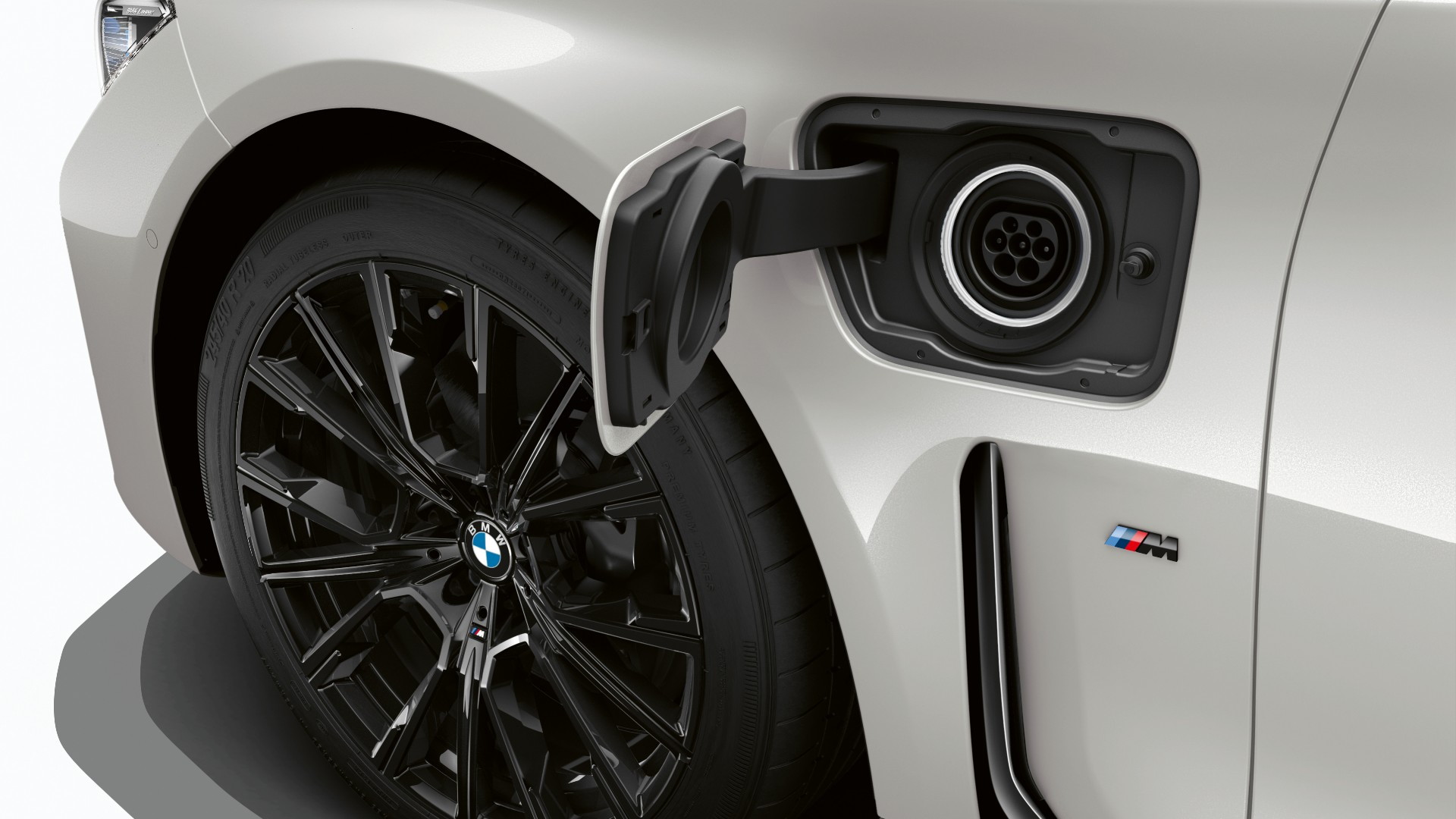Although the gigantic new twin-kidney grille might be the most eye-catching addition to BMW’s flagship luxury 7-Series sedan, the model in the lineup that’s gone through the most change might well be the one with a charge port: the 745e xDrive plug-in hybrid.
The 2020 BMW 745e xDrive iPerformance can go 16 all-electric miles, according to the EPA, which posted ratings for the upcoming model this week. That’s 2 more all-electric miles than the model it replaces, the 740e xDrive.
DON’T MISS: BMW drops diesels in favor of plug-in hybrids
The 7-Series plug-in hybrid has lost efficiency in the remake, however. The 745e has a much larger gasoline engine—a 3.0-liter 6-cylinder—and it’s rated just 22 mpg combined, versus 27 mpg combined for the previous 740e. Both models include xDrive all-wheel drive.
The previous version of the 7-Series plug-in hybrid, called the 740e xDrive iPerformance, was the first U.S.-bound 7-Series with a 4-cylinder engine. Its 2.0-liter turbo-4 gave that version a total system output of 332 hp and 369 lb-ft of torque, and it could get to 60 mph in 5.2 seconds. The 745e makes 389 horsepower and 442 lb-ft of torque altogether and can dash to 60 in 4.9 seconds.
CHECK OUT: BMW will have 25 electric cars, plug-in hybrids by 2025
Along with a bigger engine, the posh hybrid luxury sedan gets a bigger battery. The capacity has been increased to 12.0 kwh (now with 10.4-kwh net) in the 745e, versus 9.2 kwh in the 740e.

2019 Volvo S90
The closest alternative for Americans currently is the 2019 Volvo S90 Plug-In Hybrid, which offers 21 miles of EPA-rated electric range and otherwise 29 mpg combined.
READ MORE: Where do low-range plug-in hybrids fit in?
The 2020 BMW 745e xDrive comes in U.S. spec in Luxury and M Sport versions. It arrives this spring, starting at $96,445, which includes a $995 destination fee; it should be eligible for a federal EV tax credit of $5,836.
Yes, that's an expected boost of $1,168 to the tax credit buyers can claim on the 2020 model, which will go 5 fewer mpg and likely use more gasoline over its lifetime versus the 2019 version. The credit formula, built on battery capacity, doesn't take those other factors into consideration.
Currently the BMW 530e and 530e xDrive qualify for CARB HOV stickers, but the 740e doesn’t—and neither, likely, will the new 745e.

















